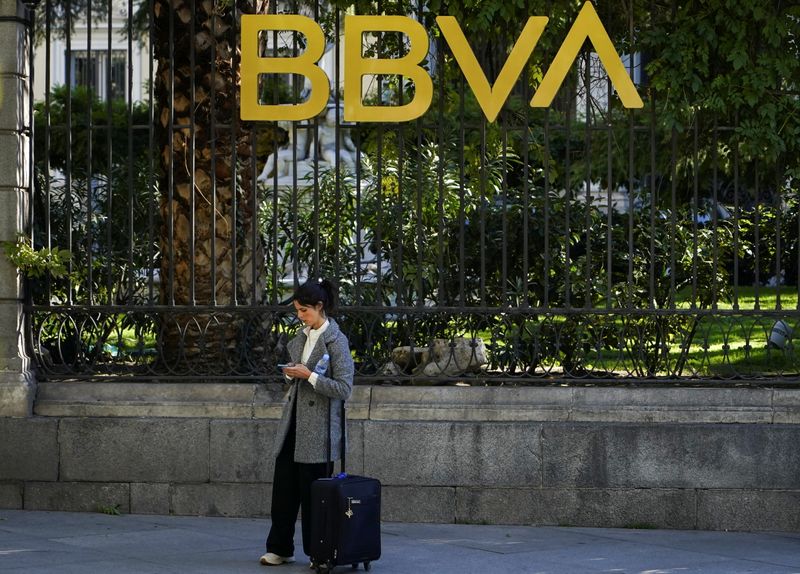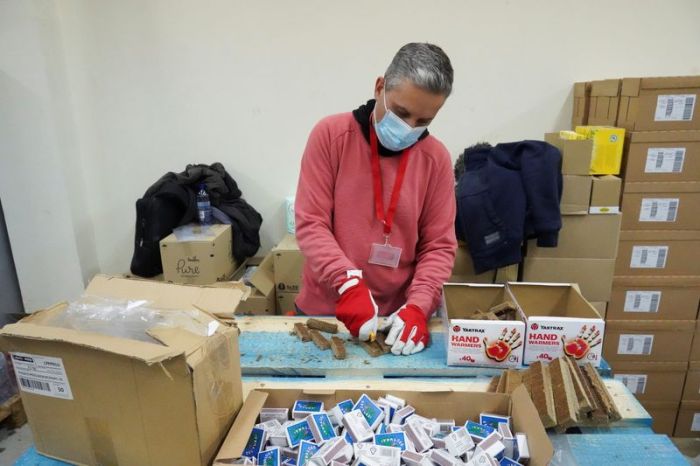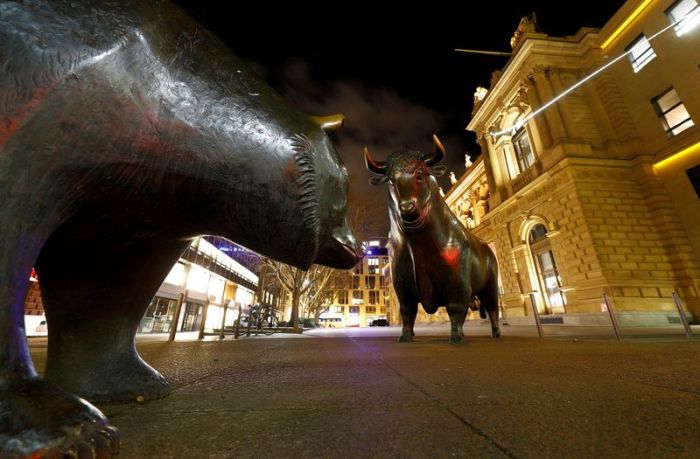By Jesús Aguado and Emma Pinedo
MADRID (Reuters) -Spain’s BBVA raised key profitability and cost targets on Thursday and said it would add 10 million customers by 2024, banking on growth in places such as Mexico and Turkey, yet its shares fell on concerns about its emerging market exposure.
BBVA, like Santander, is struggling to earn money from more mature markets in Europe and has been expanding in emerging markets, where it sees greater growth.
Chairman Carlos Torres said at BBVA’s first investor day in 14 years that the bank’s strategy was predicated on a more benign global economic outlook and with the “worst of the pandemic behind us, growth is back”.
BBVA outlined its 2022-2024 plans just a few days after it offered to buy the rest of Garanti for up to 2.25 billion euros ($2.6 billion), taking advantage of a slide in the Turkish lira.
The bank said it expected its return on tangible equity (ROTE) to rise to 14% by the end of 2024 from 11.7%, and its cost-to-income ratio to fall to 42% from 44.7%, even while keeping up investments in digital banking.
But its shares closed down 5.5%, against a 1% fall on the European STOXX banking index.
Credit Suisse analysts said that while welcoming the ROTE target hike, they saw potential headwinds due to BBVA’s exposure to emerging-market currencies, particularly Mexico and Turkey.
BBVA’s Chief Executive Onur Genc played down concerns and told Reuters that the investment would pay off.
“We are just spending 1.4 billion euros in terms of capital when Garanti has been delivering 1.2 billion profits every year over the last six years,” Genc said.
MEXICO TO DRIVE GROWTH
BBVA also said it expected revenues at its unit in Mexico, which make up more than 40% of its profit, to achieve an almost double-digit accumulated growth by 2024, while revenues in Turkey, which will make up to 25% of group earnings from 14% now, would grow in the high teens.
To weather the pandemic, BBVA sold its U.S. business last year, generating more than 8 billion euros in excess capital to focus on cost-cutting in Spain and shareholder returns.
“We will continue to cut costs in Spain but we don’t need to do another round of layoffs,” Genc said in an interview.
Taking into account a full take-up of the Garanti offer and a 3.5 billion euro share buy-back to be launched early next week, BBVA’s excess capital was around 2.2 billion euros.
Although BBVA called off merger talks with Sabadell a year ago, a deal is still widely viewed as an option given BBVA’s solid solvency buffers.
Asked about Sabadell, Torres said: “who knows what the future may bring”.
BBVA also unveiled a new dividend distribution policy of between 40% and 50% of ordinary profit, compared to a previous 35% to 40% payout. This would be implemented with the possibility of combining cash distributions and share buy-backs.
The bank reaffirmed its target for fully-loaded CET1 of between 11.5% to 12%. With the Garanti deal and the share buyback, this capital ratio stands at 12.72%.
(Reporting by Jesús Aguado and Emma Pinedo; Additional reporting by Karin Strohecker; Editing by Andrei Khalip, Pravin Char and Alexander Smith)

























